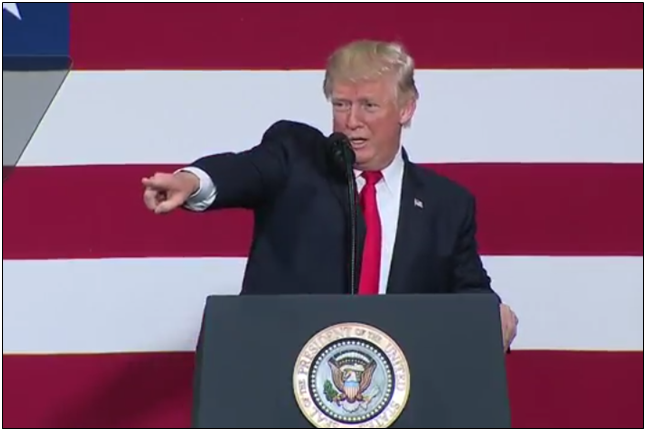Remember Smoot-Hawley.
That was the rallying cry of #NeverTrump all throughout 2016, that if elected, President Donald Trump would levy tariffs and the world would fall into recession, or maybe even another Great Depression. Because the Smoot-Hawley tariffs were the cause of the Great Depression, or so the thinking goes.
I’d say it was the strong dollar that made a bad recession worse in the 1930s, but that’s another argument. The question is what impact Trump’s tariffs had on the real economy versus the expectations of the punditry in 2016.
A Moody’s Analytics prediction by Mark Zandi in 2016, prepared for the Washington Post, predicted that as many as 4 million jobs would be lost and the U.S. economy would either flatline or go into recession if President Trump levied tariffs against China and Mexico.
Zandi called tariffs a disaster, saying, “This is a pretty ugly scenario, one that I think any rational person would want to avoid.”
It turns out that, quite rationally, Americans voted in their economic self-interests in favor of the Trump trade agenda in 2016, and Trump won the election.
Now, hindsight is always 20-20.
Moody’s mapped out a trade war with both Mexico and Canada, but Trump never levied additional tariffs against Mexico, although he briefly threatened to do so. However, he did levy them against China on $350 billion of goods.
But the outcomes were not as expected.
Instead of losing 4 million jobs, in the establishment survey published by the Bureau of Labor Statistics, the U.S. economy produced 6.6 million jobs since Jan. 2017 when President Trump was sworn in.
Moody’s said we would only have 139 million jobs in 2019. Instead we had 152 million. They were only off by 13 million.
Unemployment is at a 50-year low of 3.5 percent.
As for the Gross Domestic Product (GDP), it has stayed very much in the positive, with mid-2 percent growth levels similar to Moody’s baseline it used in 2016, with no recession in sight.
So, by every measure, the economy is great. And in 2020, seeing is believing.
And rather than provoking too much trade retaliation, Trump’s tariffs and tariff threats respectively have resulted in new trade agreements with China as well as with Canada and Mexico.
The pressure worked.
It turns out getting tough on trade ended up promoting freer trade, and the immediate negative impacts of tariffs projected by the experts were just wrong. China did retaliate, but it had no measurable impacts on U.S. jobs markets or growth prospects, and so Beijing was brought to the table.
And with the modest tariffs now in place, the U.S. trade in goods deficit with China fell 12.8 percent in the first nine months of 2019, or $38.5 billion, compared to 2018, according to the latest data from the U.S. Census Bureau.
Meaning, Trump was right all along. It is China and other trade partners that have more to lose by failing to make a deal with the U.S.
Developing economies want to export, meaning we have something they want in the way of markets. Being a net importer, the U.S. has always had more leverage in trade relations. We were just not using it to our advantage in the trade negotiations. Until Trump came along.
Now agreements are being reoriented to serve U.S. interests with a measurable net benefit to the U.S. economy. And the American people, as they get prepared to vote in 2020, can see it in their finances. They were warned that the economy would be a catastrophe if the Trump trade agenda were implemented. It would be the worst recession since the Great Depression. Millions of jobs would be lost.
Instead, Trump won, his trade agenda was implemented and the economy is booming. Who will voters believe in 2020, the critics or their own lying eyes?
Robert Romano is the Vice President of Public Policy at Americans for Limited Government.







